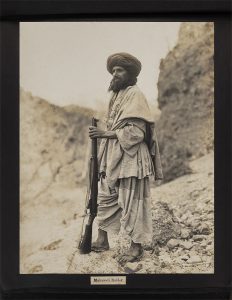Anticolonial Practice and the Image Archive: Notes on the Art of Writing Indian History
By Vazira F-Y Zamindar, Associate Professor of History

How does one consider formations of art and history through a colonial archive that has been systematically organized under the sign of counter-insurgency, an archive that is meant to anticipate, discredit and destroy resistance to colonial power? Can an anticolonial practice reorganize the signs under which the past flows into the future?
Anticolonial Practice and the Image Archive: Notes on the Art of Writing Indian History restitutes Gandhara Art to the insurgent geographies of the Indo-Afghan borderlands to interrogate the complicity of art historical formations in sustaining extraordinary colonial violence and in the partitioning of the Indian past. At once an archival excavation and a meditation on repair, it stays at the scenes of colonial ruin and dispossession to assemble images rarely viewed together. From government records, ethnographic dictionaries, military manuals, war albums, archaeological reports, museum catalogues, colonial films, memoirs, Gandhi biographies, and fieldwork stretched over the last two decades, such an assemblage allows us to consider debates on Buddhist art, military histories of punitive expeditions and aerial bombing, and the nonviolent mobilizations of the Khudai Khidmatgars in relation to each other, and to forge anticolonial practices of experiment and improvisation that can suture a fractured past and its multi-religious cohabitations.
Learn more about the author.
